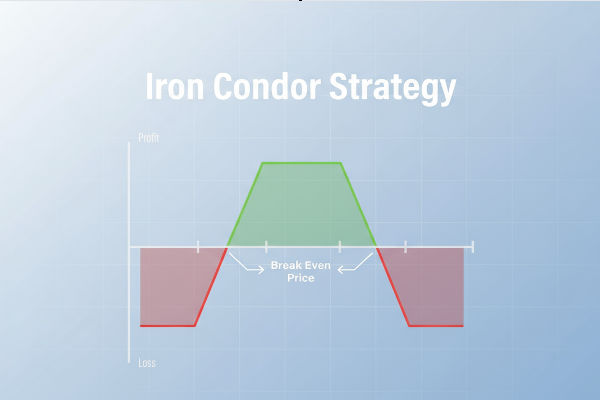Many traders spend hours perfecting their entry signals—scanning charts for candlestick patterns, monitoring economic news, or running technical indicators. But while entry decisions get most of the attention, exits are often what separate profitable traders from those who consistently leave money on the table. In forex, where volatility can change direction within minutes, an exit strategy is just as critical as your entry plan.
An exit strategy in forex is the method a trader uses to close a winning trade in a way that maximises profit while managing risk. Without a clear exit strategy, traders may either close trades too early, missing out on extended moves, or hold on too long, watching gains evaporate. This guide explores smart ways to build and execute an exit strategy in forex, combining both technical tools and psychological discipline.

Fixed Targets vs Trailing Exits
One of the first decisions in building an exit strategy is choosing between fixed targets and trailing exits.
A fixed target means you set a predetermined level to close your trade. For example, if you enter EUR/USD at 1.0800 with a 100-pip target, you close at 1.0900 no matter what happens in between. This approach is simple and works well for structured trading plans.
A trailing exit, on the other hand, allows you to lock in profits while giving the trade room to run. For instance, you might trail your stop-loss 30 pips behind price. If EUR/USD rises to 1.0950, your stop automatically adjusts to 1.0920. Should the market reverse, you exit with profit instead of giving it all back.
The best traders often combine both—setting an initial fixed target while also using trailing stops to capture extended moves.
Using Technical Indicators for Exit Strategy
Technical analysis provides valuable tools for defining exits. Moving averages, for example, can act as dynamic support and resistance levels. Traders often exit when price closes below a moving average in an uptrend, signalling momentum loss.
The Relative Strength Index (RSI) can also guide exits. If RSI enters overbought territory, it may signal that the trade is running out of steam. Similarly, Fibonacci retracement levels can help traders identify logical profit targets where reversals are likely.
An exit strategy in forex should not rely on just one indicator. Instead, combining multiple tools improves reliability. For example, if price approaches a Fibonacci resistance level while RSI shows overbought conditions, it strengthens the case for exiting.
Adapting Exit Strategy to Trading Styles
Different forex trading styles require different exit strategies.
Day traders often use fixed pip targets or intraday support and resistance levels since they close positions within hours. Swing traders, holding for days or weeks, may rely on broader technical levels like daily moving averages or weekly Fibonacci levels. Position traders, aiming for long-term trends, may use trailing stops or macroeconomic indicators as their exit triggers.
The key is aligning your exit strategy with your time horizon. A day trader cannot expect to capture 500 pips in one session, just as a position trader cannot base exits on a single candlestick pattern.
The Role of Risk-to-Reward Ratio
A critical part of any exit strategy in forex is the risk-to-reward ratio. This determines whether your potential reward justifies the risk taken. Many traders aim for at least a 1:2 ratio, meaning they risk 50 pips to target 100.
Without a solid risk-to-reward framework, even frequent winning trades can result in overall losses. An exit strategy ensures you not only close winning trades but do so in a way that supports profitability over the long term.
Managing Psychology in Exits
Exiting trades is as much psychological as technical. Traders often face the dilemma of holding on for more versus taking profits early. Fear of losing gains can cause premature exits, while greed can lead to overextended positions.
A rules-based exit strategy helps counter these emotions. For instance, committing to always move the stop-loss to breakeven after a 50-pip gain removes the temptation to second-guess. Journaling trades and reviewing whether exits align with your rules also improves discipline over time.
Case Study: A Winning Trade Without an Exit Strategy
Consider a trader who goes long USD/JPY at 140.00, riding strong bullish momentum. Within hours, the pair rises to 141.50, placing the trade 150 pips in profit. Without an exit strategy, the trader decides to “let it run.” Unfortunately, unexpected comments from a Bank of Japan official trigger a reversal, and USD/JPY falls back to 140.20. What could have been a strong winning trade ends up nearly flat.
This highlights the danger of trading without an exit strategy. By contrast, a trader with a trailing stop at 141.20 would have locked in 120 pips while still leaving room for potential gains.

Practical Steps to Build Your Exit Strategy
Building an exit strategy in forex involves several steps. Define your profit target or trailing method before entering any trade. Decide whether you will scale out or exit fully at one point. Integrate technical analysis to guide timing, but remain flexible to adapt to market conditions. Test your strategy in a demo account before applying it to live trades.
Documenting your strategy is also important. Writing down rules removes ambiguity and helps build consistency. For example, “I will always close 50% of my position at a 1:1 reward-to-risk ratio and trail the remainder with a moving average.”
Final Thoughts
A successful exit strategy in forex is not about predicting exact tops and bottoms. It is about creating a disciplined plan that locks in profits, manages risk, and aligns with your trading style. By using tools such as trailing stops, technical indicators, scaling out, and risk-to-reward ratios, retail traders can avoid the common pitfall of letting winning trades turn into losses.
Ultimately, the exit strategy is the unsung hero of profitable trading. Entries may capture attention, but exits define results. By mastering when and how to close trades, you set the foundation for consistent success in the forex market.
Disclaimer: This material is for general information purposes only and is not intended as (and should not be considered to be) financial, investment, or other advice on which reliance should be placed. No opinion given in the material constitutes a recommendation by EBC or the author that any particular investment, security, transaction or investment strategy is suitable for any specific person.























